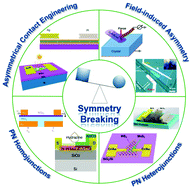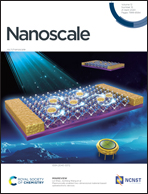Breaking symmetry in device design for self-driven 2D material based photodetectors
Abstract
The advent of graphene and other two-dimensional (2D) materials offers great potential for optoelectronic applications. Various device structures and novel mechanisms have been proposed to realize photodetectors with unique detecting properties. In this minireview, we focus on a self-driven photodetector that has great potential for low-power or even powerless operation required in the internet of things and wearable electronics. To address the general principle of self-driven properties, we propose and elaborate the concept of symmetry breaking in 2D material based self-driven photodetectors. We discuss various mechanisms of breaking symmetry for self-driven photodetectors, including asymmetrical contact engineering, field-induced asymmetry, PN homojunctions, and PN heterostructures. Typical device examples based on these mechanisms are reviewed and compared. The performance of current self-driven photodetectors is critically assessed and future directions are discussed towards the target application fields.

- This article is part of the themed collection: Recent Review Articles


 Please wait while we load your content...
Please wait while we load your content...